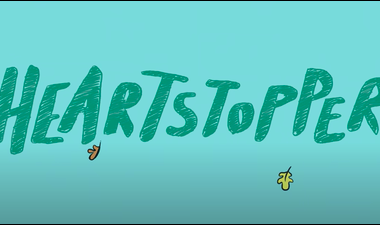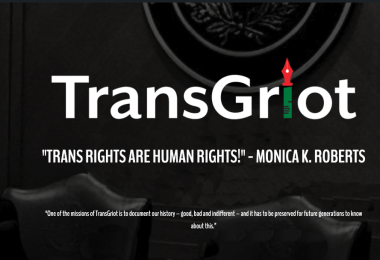by Eness Scott
Corporations and brands engaging in Pride marketing have always toed the line between solidarity and capitalistic exploitation (most falling into the latter). This year was somewhat different however, given the sudden lack of brands incorporating Pride paraphernalia in their collections– a likely outcome of rightwing campaigns against trans and queer people.
There are conversations to be had about superficial inclusion. Many companies feature queer aesthetics without any grasp of queer liberation– and there are definitely limitations to any capitalist gesture. However, one brand this year managed to not only place trans people in focus, but specifically folks affected by transmisogynoir.
Milk Makeup published a photo and a series of articles interviewing the Haus of Telfar from the kiki scene of ballroom. The tagline of this series was “Black Trans Femmes Create Culture,” as the members featured from the house were its trans fem(me)s. The language choice in using Black trans femmes instead of simply Black trans women is very intentional.
Trans fem(me) encompasses not only trans women, but also non-binary, genderfluid, and gender-nonconforming transmisogyny-affected individuals. This is a blatant acknowledgement that not everyone who is a trans woman or is perceived as such, identifies or defines themself [solely] as a woman.
One clear example of this is one of the featured trans femmes, Iris Telfar (she/they). I was already familiar with Iris from the podcast she co-leads, The Up and Coming Legendary Children. Aside from the podcast serving as one of my keys to understanding ballroom culture prior to entering the scene, hearing Iris discuss their gender identity transformed my understanding of [my own] gender completely. I remember hearing Iris confess that despite starting hormones she didn’t really see herself as a fem queen. In the ballroom scene, what is often pushed as the primary difference between butch queens and fem queens is that fem queens are taking the steps to transition, socially and especially medically. Butch queens, who have a more fluid sense of gender but don’t transition in that specific way, are often encouraged to walk the drag categories. Only recently have gender-nonconforming categories sprouted (and even then, definitely not without controversy). For this reason, undergoing HRT and socially transitioning without claiming fem queen are acts that defy the typical gender categorizations of ballroom, as Iris does. Eventually I came to realize this was not exclusive to them; there are several gender variant folks in ballroom who defy classification.
Very often the experiences of non-binary folks are misunderstood and framed reductively, in ways that prevent full comprehension of how varied the people under this umbrella term are. Additionally in the many flawed and reductive discourses about gender, non-binary individuals are often placed in opposition to so-called “binary trans people” (especially trans women) as though the groups have no overlap. By featuring two trans women and two non-binary trans fem(mes) in this series, Milk Makeup frames femininity as a spectrum where a range of gender embodiments are valid. They show that medically transitioning can in fact be congruent with a non-binary and/or fluid gender expansive experience, adding very necessary nuances to our understanding of gender, which can be an awakening for folks unsure of how to express their identity.
While this collaboration between Milk and the Haus of Telfar does reflect some brands shifting towards understanding the level of respect and care required to be given ballroom participants and other Black queer folk they choose to feature, it is even more indicative of important shifts in the greater public’s understanding of gender. It isn’t just highlighting Black trans women alone, but other gender expansive folks who occupy the same strata, It heralds them ALL as the progenitors of the culture several consume, take influence from, appropriate, misconstrue, and more. This is a truth that many people have yet to acknowledge, and any business or organization that seeks to involve Black queer and trans people should be keen to catch up.
Eness Scott (They/She/He) is an aspiring writer, with interests in ballroom and cultural archivism. They are a pan-afrikanist Black anarchic radical who is darkskinned, neurodivergent, and genderfluid. Everything they do is for fellow queer and trans Afro-Diasporans.






